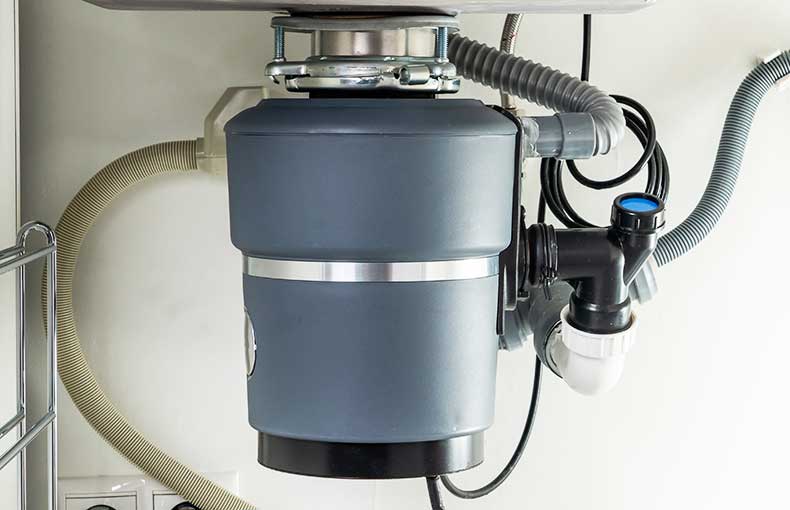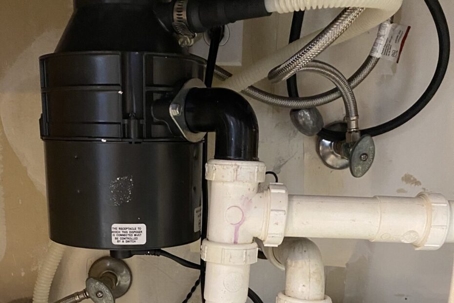Best Methods for Resolving a Leak in Your Garbage Disposal
Best Methods for Resolving a Leak in Your Garbage Disposal
Blog Article
Do you find yourself trying to find critical info concerning How to fix a pretty consistent leak from my garbage disposal?

Waste disposal unit are important kitchen devices that assist in disposing of food waste efficiently. However, a dripping garbage disposal can be a frustrating and messy issue to deal with. The good news is, lots of leaks can be repaired easily with a couple of basic actions. In this short article, we will certainly review just how to take care of a dripping waste disposal unit successfully.
Introduction
Garbage disposals are mounted under cooking area sinks and are created to shred food waste into smaller pieces, allowing it to go through the plumbing system easily. While these tools are usually reputable, leaks can take place gradually as a result of wear and tear, loose links, or damage to the system.
Step-by-Step Guide to Fixing a Leaking Waste Disposal Unit
Switch off the Power
Prior to trying any kind of repairs, ensure that the power to the garbage disposal unit is turned off to stop the danger of electric shock.
Locate the Leakage
Determine the specific location of the leakage and determine the reason
Tighten Connections
Utilize a wrench to tighten any type of loosened links between the disposal unit and the pipes system.
Replace Seals or Gaskets
If the leakage is because of used seals or gaskets, remove the old elements and change them with brand-new ones.
Patching Fractures or Openings
For splits or holes in the disposal system, use epoxy or an ideal patching product to secure the damaged location.
Identifying the Source of the Leak
Prior to trying to deal with a leaking garbage disposal, it is important to identify the source of the leakage. This can generally be done with visual examination or by conducting easy examinations.
Visual Inspection
Evaluate the waste disposal unit unit meticulously for any type of indications of water leak. Pay attention to locations around seals, gaskets, and link factors.
Testing for Leakages
One means to check for leakages is by running water via the disposal system and looking for any kind of visible indications of leak.
Typical Reasons For Leakages in Trash Disposals
Worn Seals and Gaskets
Seals and gaskets play an essential function in avoiding water from leaking out of the garbage disposal. In time, these elements can weaken, leading to leaks around the disposal system.
Loose Links
The connections between the garbage disposal and the pipes system can become loosened with time, causing water to leak out during operation.
Fractures or Openings in the Disposal Unit
Physical damages to the garbage disposal, such as cracks or holes in the housing, can also result in leaks.
Devices and Products Needed for Taking Care Of a Dripping Garbage Disposal
Prior to starting the repair work procedure, collect the necessary tools and materials, consisting of a screwdriver, adjustable wrench, plumbing professional's putty, replacement seals or gaskets, and epoxy or patching material for repairing cracks or openings.
Evaluating the Garbage Disposal After Fixing
As soon as the repair service is complete, evaluate the waste disposal unit by running water through it to make sure that the leakage has been settled.
Preventive Upkeep Tips to Prevent Future Leakages
To avoid future leakages, it is necessary to do normal maintenance on your garbage disposal. This includes maintaining it clean, avoiding placing non-food items or difficult objects down the disposal, and periodically checking for leaks or various other issues.
Verdict
Finally, repairing a leaking waste disposal unit is a relatively simple process that can be finished with fundamental tools and materials. By adhering to the steps laid out in this article and practicing preventive maintenance, you can keep your garbage disposal in good working condition and prevent expensive repairs in the future.
What to Do About a Leaking Garbage Disposal
A leaking garbage disposal often goes unnoticed until you confront a sopping cabinet, a foul-smelling puddle, or an audible drip-drip-drip from the unit. The fix can be frustrating, too, because the leak can stem from a number of components in the system. Fortunately, with a little sleuthing, you can zero in on the leak and—depending on the exact location—stop the icky oozing and repair the component that caused it. Worst case scenario, if it turns out that the garbage disposal must be replaced, installing a new one is a reasonable do-it-yourself task for those with basic plumbing skills. Read on to keep the cash you’d otherwise hand over to a pro.
Prepare to find the leak
Prior to testing the garbage disposal for leaks, unplug it at the wall outlet and turn off the power from the breaker box to prevent electrical shock. Then insert a watertight sink stopper into your sink drain and wipe the unit dry with a clean cloth. In any handy container, mix a few drops of food coloring into a few cups of water, and pour the dyed water onto the sink stopper to help you locate the leak.
Investigate the source
the top, where the disposal meets the sink drain the side, where the dishwasher hose or main drain pipe connects to the disposal or the bottom of the unit Inspect each of these locations while gliding a light-colored rag over the unit; the dyed water will readily show on the rag and reveal the location of the leak. If a leak isn’t immediately apparent, remove the sink stopper and pour a few more cups of dyed water down the sink drain, then check for leaks again. Leaks near the top of the unit are more likely to show themselves while the sink is plugged, while side and bottom leaks are more noticeable while the sink is unplugged.
The metal sink flange that sits directly inside the sink drain is typically sealed around the top with plumber’s putty (a clay-like sealant) and then secured from under the sink with bolts. If the plumber’s putty deteriorates, or the bolts loosen, the flange can no longer form a watertight seal between the sink drain and the disposal—which could cause a leak at the top of the unit.
To reseal the leaky flange, you must first detach the garbage disposal. Start by loosening the screws securing the main drain pipe to the disposal, then loosen the screws in the metal clamp securing the dishwasher hose to the disposal and detach the drain pipe and dishwasher hose from the disposal. Loosen the screws in the mounting ring that connects the disposal to the metal mounting assembly beneath the sink, then pull down the disposal and carefully set it on a clean, dry surface. Loosen the bolts in the mounting assembly with a wrench, then pull down the mounting assembly and set it near the disposal.

Hopefully you enjoyed reading our part about Why Is . Thanks a ton for spending some time to browse our short article. If you enjoyed our page please do not forget to pass it around. We recognize the value of reading our article about The Handy Guide To Fixing Your Garbage Disposal Leaking.
Book A Service Call Report this page